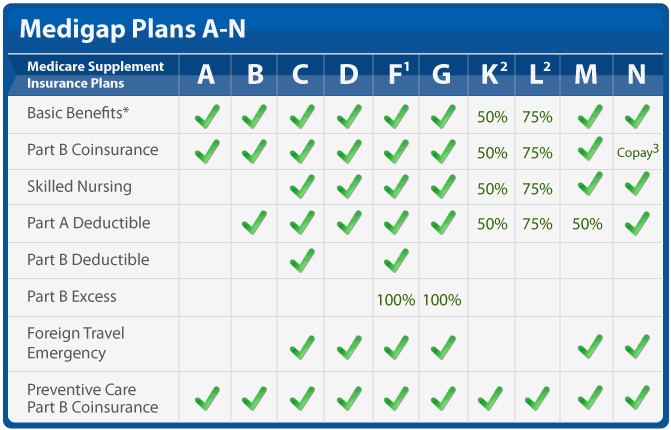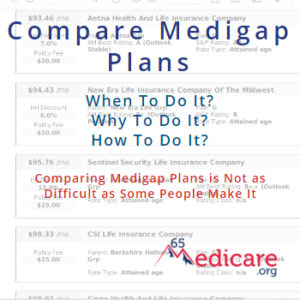Medigap Plan G vs. Medigap Plan N
There are several factors which should be considered when choosing between a Medigap Plan G or Plan N. It basically comes down to making an informed decision based upon your personal situation, finances and lifestyle. Below I will explain some similarities and differences between these two plans, so that you will be better informed to make your choice.
Get a List of Medigap Plans for Your Zip Code
Complete the form to receive the information via email
[si-contact-form form=’9′] Information will be delivered by email, typically within a few minutes of the requestWhat Do Plan G and Plan N Have in Common
There are many similarities between Plan G (some people call it “Medicare G“) and Plan N. In fact, they are more alike than they are different (which may be why you are considering these two plans). Many people consider them to be the two best Medigap plans. Here is a list of the primary similarities:
- Medicare Part A deductible IS covered
- Medicare Part B deductible of $257 (2025) per year is NOT covered
- Hospitalization, skilled nursing facility care, blood, hospice care, foreign travel ARE covered
- An application must go through medical underwriting unless you are enrolling during open enrollment or have a guaranteed issue situation
What are the Differences Between Plan G and Plan N
Although there are many similarities, there are also a few significant differences between Plan G and Plan N:
Plan G has:
- No Part B doctor/outpatient copays
- No emergency room copay
- No Part B excess charges of 15% (the difference in cost between the Medicare-approved payment amount for services and the amount your health care provider charges). They cannot charge more than 15% above the assigned rate and still be reimbursed by Medicare.
Plan N has:
- Part B doctor/outpatient copay of up to $20 per office visit
- Part B copayment of up to $50 per each emergency room visit. Note: If you are admitted to the hospital, then this copayment is waived.
- Part B Excess charges of up to 15% (if the provider charges Part B excess charges and does not accept Medicare “assignment”)
Medigap Plan G Premiums vs. Medigap Plan N Premiums
In most states, Plan G generally runs about $20-25 more per month than Plan N (More about Plan G prices). Depending upon the condition of your health, it might be a better idea to sign up for Plan N, even though there is a copay and may be 15% in excess charges associated with it.
Example 1: Tom is a 72-year old man, who lives a healthy lifestyle. He does not take any medications, except for vitamins and herbs, and works out almost daily at the YMCA. The only time he sees a doctor is when he goes for his annual physical. In his case, it would be more cost effective for Tom to choose Plan N over Plan G. Why? Because even though he will have had to pay a copay and perhaps more if his doctor doesn’t accept Medicare assignment, it will amount to less than if he paid that higher premium for Plan G.
Example 2: Linda is 69-year old woman, who lives a sedentary life. She’s a smoker, slightly overweight, and has high blood pressure. She only works out about 1 to 2 times per week. She’s on medication for her blood pressure, and takes an antidepressant daily as well. She visits her doctor at least four times a year, if not more. In Linda’s situation, it would be more beneficial for her to enroll in a Plan G. Why? Because by the time she adds up all her doctor visits, possibly incurring lab copays and 15% in excess charges, she will have paid out more annually, even though her monthly premium is lower.
Other Considerations Between Plan G and Plan N
When choosing between Plan G and Plan N, another consideration that you must make is about the future. The initial open enrollment selection of a Medigap plan is not necessarily a “final” choice. You can always change plans or companies in the future. However, and this is an important and commonly misunderstood point, you have to answer medical questions and be “approved” if you change plans later.
So, what this means is that, even if your current health dictates that you enroll in a Plan N (or possibly even in an Advantage plan), you should think about that decision on a long-term basis. What you enroll in initially, if you have or develop health problems, may be what you keep out of necessity.
Choosing the right plan to meet your needs may either be an easy decision or more complicated than you imagined it to be. The bottom line is that it all depends on your current personal health profile and what you anticipate your health status to look like in the near and distant future. You may have an elective surgery coming up that might increase the amount of times you will need to see a health care provider. Your finances may also be impacted. So, these are all things that should be taken into consideration in your final decision between Plan G and Plan N.
Bottom-line, there is no right or wrong answer to choosing between Plan G and Plan N. The right decision depends on your unique situation. What we do is provide the list of options – companies, rates, and ratings – for both Plan G and Plan N so you can make an informed choice. Get a list of Plan G and Plan N quotes, delivered by email, here.



